It’s cold and windy, the Montana environment is at its most formidable. For first-time and returning gardeners alike, the weather conditions couldn’t be more aligned with the Winter gardening tasks–curling up on a tea-stained couch at night with seed catalogs and a mock-diagram of your garden plot.
1,000 New Gardens cultivator, Geoff Badenoch (ie. Tiger Prawn) spied a neat, hopefully less intimidating website for new gardeners to peruse. He writes, “www.gardeners.com is obviously a commercial gardening source, but I thought this was an interesting way to picture and plan a garden.” For all practical purposes, it’s all there. The plot design function (dimensions and plant makeup) is worthy of any new gardeners’ attention. It’s ripened for you to start visualizing your space, especially if you’re considering companion planting or any sort of vegetable organization (read: control in the garden patch). If you’re in search of the ultimate resource for companion planting (or anything really, from ordering seeds to planting to preparing soil and harvesting) look no further than the local gardening expert Sandra Perrin’s book Organic Gardening in Cold Climates (pages 59-63). The Missoula Public and University of Montana Libraries are loaded with copies.
SEEDS–1kng organizers in Missoula have begun planning the 2nd Annual Seedluck (seed ordering potluck) to take place in late February or early March. Last year’s gathering at the public library was littered with great food and words from long-time Missoula gardeners. We’d like to pack the room with new growers this year so stay in the loop for specific information on the winter feast!
HOPS–If you’d like to expand your repertoire this year or you’re something of an avid homebrewer, consider starting your own hop vines with rhizomes this spring. The illuminary brewery, Crannog Ales, which brews certified organic beer on-site published a free manual for beginners. It’s called “For a Small Scale & Organic Hops Production. Another mentionable is that last fall I got a tip that the local homebrew store within the Lolo Peak Winery gives away hop rhizomes (pruned from the owner’s plants) each spring–hopefully someone will send out the alert when the goin’ gets hoppy!
JANUARY DIY TIP written by our partners at the Missoula Urban Demonstration site:
Even the best-managed compost pile turns to ice in the winter. The secret to a compost pile that cooks all winter long is to surround it with earth’s natural insulation properties. The technique is called pit composting, and it retains heat in the soil to keep the pile from freezing. All you need are the following: large plastic garbage can, straw bales or bags of dry leaves, and a couple tools you can check out from the Tool Library – a saw or utility knife, drill, and shovel. Cut the bottom off of the garbage can, drill holes in the top 2/3rds of the can for ventilation, and set the can in a hole 6+ inches deep and as wide as the can. Surround it with the straw or leaves, but don’t block all the ventilation holes. Keep the lid on when you’re not adding kitchen scraps and other compostable material. The process is a little slower than composting in warm weather, but the pile shouldn’t freeze. For complete instructions, click the Organic Gardening magazine online link:
WORKSHOPS–Several MUD workshops are playing on channel 7 cable! Check out that link if you’re like me (no tv) and want to watch the instructions online!
–Basics of Beer Brewing workshop: January 8, 2010 from 9pm to 10:30pm & January 9, 2010 from 8:30pm to 10pm
–Electric Fencing For Gardens and Wildlife workshop: January 12, 2010 from 10pm to 11:45pm
–Sewing Basics (Sew Your Own Grocery Bag) workshop: January 15, 2010 from 4:30pm to 6pm
As always, MUD’s upcoming events are also online at http://mudproject.ning.com/events


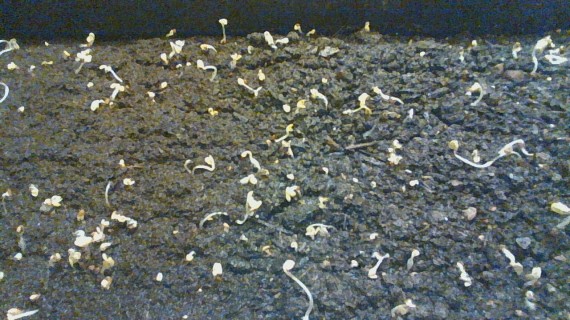

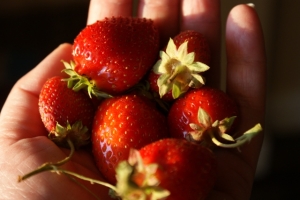


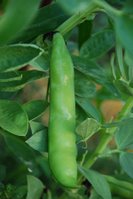 It’s about time to leave pea pods on their vines (so the seeds fully mature) and a few biennial carrots in the ground (until next year for them to flower). The Basics of Seed Saving Workshop is also just around the corner at the Missoula Urban Demonstration site. The cost is $10 for members and $20 for non-members–well worth picking up the skills you’ll need Peak Oil or when your peaking interest in hybrid seeds plunges. The workshop is scheduled for August 22 and lasts from 1-3 PM. Think of it this way–once you’ve harvested a sweet crop of seeds, you’ll be able to trade with other Missoulians at the Seed Saver Swap in late October (Date & Time TBA).
It’s about time to leave pea pods on their vines (so the seeds fully mature) and a few biennial carrots in the ground (until next year for them to flower). The Basics of Seed Saving Workshop is also just around the corner at the Missoula Urban Demonstration site. The cost is $10 for members and $20 for non-members–well worth picking up the skills you’ll need Peak Oil or when your peaking interest in hybrid seeds plunges. The workshop is scheduled for August 22 and lasts from 1-3 PM. Think of it this way–once you’ve harvested a sweet crop of seeds, you’ll be able to trade with other Missoulians at the Seed Saver Swap in late October (Date & Time TBA).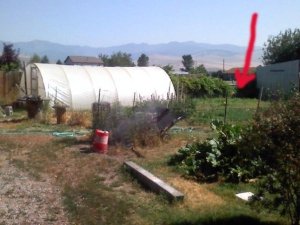
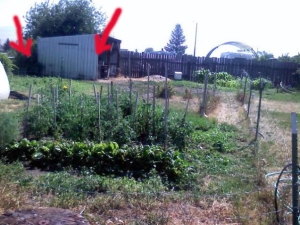 At two households that have, for all practical purposes, been in fallow for years (visual of one), the lords of the land are letting us fill the void by weeding or tilling, llama manuring or composting, and planting this week.
At two households that have, for all practical purposes, been in fallow for years (visual of one), the lords of the land are letting us fill the void by weeding or tilling, llama manuring or composting, and planting this week.
